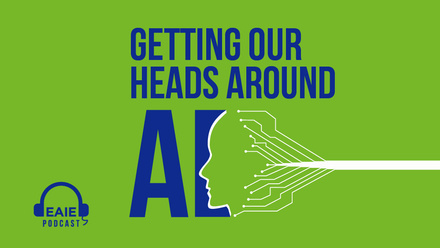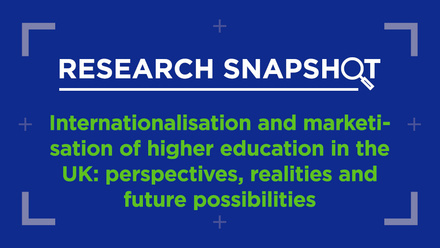Branding and bonding: the key to competing in the digital age

COVID-19 has catapulted higher education institutions into the digital age. During the pandemic, Google launched its Career Certificates Program, consisting of six-month online courses to become, for example, a data analyst or project manager, and promised to treat these certificates as equivalent to any accredited four-year degree in their hiring policy. Some years before, Laurie Pickard had already designed her own MBA curriculum by attending numerous MOOCs from the world's best institutions, costing her only a fraction of what a traditional MBA at any of these institutions would.
How does an institution survive this fierce competition and cut through the digital clutter? The answer involves strong differentiation and branding strategies, as well as an intensified community-building and bonding outreach programme among all university stakeholders.
Clear branding to cut through the digital clutter
Higher education's digital transformation increases competition for universities in at least two ways: firstly, previously far-away universities suddenly become very close due to online courses and programmes; secondly, alternative tech-driven educational providers progressively enter the marketplace. In order to cut through this digital clutter, a university must show why prospective students should study there and not at any of the numerous alternatives. Clear branding and strong positioning of a higher education institution help in this endeavour. Helsinki-based Aalto University, for example, strongly differentiates itself by claiming that it is educating future leaders via a multi- and interdisciplinary approach to teaching and learning to become a force for positive change, carrying their innovative mindset into a sustainable future.
Previously far-away universities have suddenly become very close due to online courses and programmes
Yet, a university's differentiation strategy needs to go beyond simple advertising and marketing. In the case of multi- and interdisciplinarity as the chosen positioning, all courses and modules should pursue such an approach. This might necessitate a full review of a university's current programme portfolio, revising curricula and finally dropping some programmes and courses altogether. Those professors, students and alumni who are wholly aligned with the institution's branding should be prominently featured in communications. To facilitate the right message, stakeholders should be provided with simple talking points. After all, they can only act as strong brand advocates if they know and understand what is expected of them. In the end, a university's positioning should be the leitmotif of any of its leadership's decisions.
Job markets will be the judge of your branding success. Would employers be able to tell what your university stands for? Would employers be interested in hiring your graduates instead of those of your competitors? Are your students outperforming on chosen brand characteristics? If job markets cannot tell the difference between your students and those with a Google Career Certificate, difficult times for universities appear on the horizon.
Strong bonding to attach stakeholders for a lifetime
Customer retention is a lot less costly than customer acquisition. A strong bonding strategy helps to attach a university's key stakeholders – ie students and alumni, faculty members, professional service staff, as well as external partners – for a lifetime. Connected alumni, for example, will discuss their alma mater regularly. Positive word-of-mouth is equivalent to high marketing expenditure, as any marketer will confirm. Moreover, dedicated alumni will provide their time and expertise as advisers, to take part in courses, or other similar offerings. Ultimately, they could even become donors and fund a university's projects.
Professors should be strongly attached to their employers. Hiring a new faculty member is associated with a great deal of work and high investments, as early-career professors will be given a lot of time to do their research with fewer teaching obligations. Often, however, the publish-or-perish mantra is counterproductive, since successful researchers regularly leave an institution precisely when their teaching load increases, looking for a better offer on the market. To motivate them intrinsically, attaching them to their university instead of fostering a culture of extrinsic valuation might do the trick. One could imagine regular team-building activities within the faculty body or on the academic department level, or simply giving professors flowers to celebrate major achievements or birthdays.
A strong bonding strategy helps to attach a university's key stakeholders for a lifetime
Attachment is fostered by interactions, inspiring conversations and experiences that often happen during breaks or after classes. With more and more courses taking place online, universities need to actively create occasions for such interactions and memory-making. Study trips, sports clubs, and student societies are some among such possibilities. Physical buildings are more vital than ever as they need to enable socialising and attract students and faculty alike. Online learning and teaching attaches students and educators to their living rooms instead of to their university. Effective career service and adapted continuous learning offers during alumni lifetimes will increase attachment to their alma mater. Finally, a clear branding strategy leads to long-term bonding and loyalty, too, with stakeholders not only working for their employer but for a project and mission.
Complex, yet crucial, challenges to overcome
Your chosen brand attributes will certainly not convince everybody. Universities' leadership teams may be reluctant to scratch some programmes that aren’t aligned with the brand for fear of losing out on valuable revenue streams or, even more challenging, of offending an institution's key stakeholders. Long discussions and consultations might be necessary to find the right positioning. Proactively fostering attachment could also lead to tough choices. What happens when a student society's key event coincides with a lecture? Any university president will understand the potential for trouble in such a decision.
If job markets can’t tell the difference between your students and those with a Google Career Certificate, difficult times are on the horizon
Despite such challenges, persevering in implementing a clear branding and bonding strategy could be decisive for a university's post-pandemic future. COVID-19 accentuated and accelerated the sector's digital transformation, leading to an ever more competitive higher education landscape. Academia is highly people-intensive; yet, in its pre-pandemic version, it was decidedly un-digitalised. The combination of both is often a signal for disruption. Therefore, by pursuing post-pandemic perseverance in branding and bonding, universities worldwide will be well-positioned to confront the rapidly approaching digital future.






